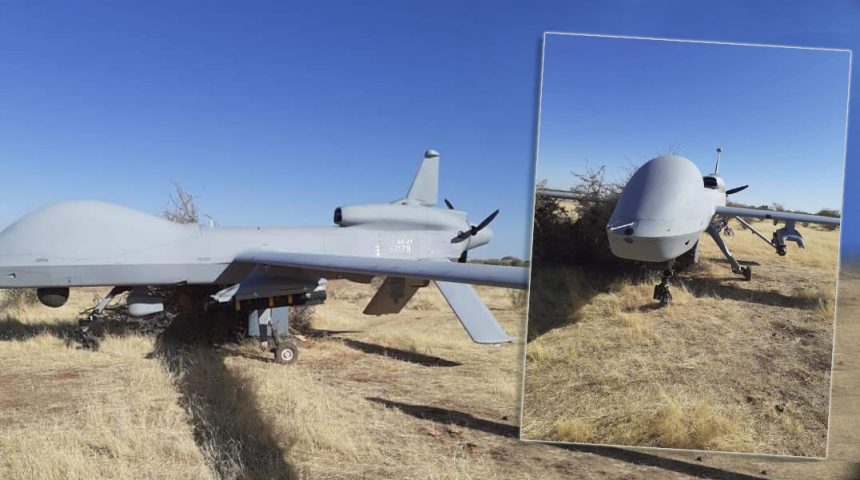A U.S. Army MQ-1C Gray Eagle landed on on the ground in Niger, with a live Hellfire missile on the left wing pylon.
Photos have started to emerge on social media on Jan. 24, 2021, of a U.S. MQ-1C Gray Eagle drone on the ground in northern Niger.
The images show that the remotely piloted vehicle (with U.S. Army marking and serial number) carried at least one live AGM-114 Hellfire missile under the left hand wing.
Photos of a US 🇺🇸 operated MQ-1C Gray Eagle after conducting an emergency landing in Northern Niger pic.twitter.com/ySbojGdcT4
— Intel Air & Sea (@air_intel) January 24, 2021
Responding to questions about the photographs on Twitter, the U.S. Africa Command acknowledged that an incident involving an MQ-1C Gray Eagle occurred on Jan. 23, 2021. The unmanned aircraft conducted an emergency landing near Agadez, Niger, after suffering an unspecified malfunction “while conducting a routine mission in support of operations in the region”.
(1/2) A U.S. Africa Command remotely piloted aircraft conducted an emergency landing in the vicinity of Agadez, Niger, Jan. 23. The aircraft experienced a mechanical malfunction while conducting a routine mission in support of operations in the region.
— US AFRICOM (@USAfricaCommand) January 24, 2021
The Gray Eagle is an advanced derivative of the Predator specialized in providing direct operation control by Army field commanders. It can fly Reconnaissance, Surveillance, and Target Acquisition (RSTA); convoy protection; Improvised Explosive Device (IED) detection as well as providing live aerial imagery to ground patrols carrying also PGMs (Precision Guided Munitions): in other words, it can support a wide variety of missions including attack, assault, reconnaissance, infiltration and exfiltration, and any kind of known or unknown special operations you may imagine.
The type has been flying over the U.S. hot spots around the world for quite some time now (including Iraq, where one was lost in 2015). Dealing with Niger, armed U.S. drones have been operating out of Niger Air Base 201, located around 5 km southeast of Agadez, since 2019, thanks to a bilateral agreement between the U.S. and Nigerien governments. Previously, U.S. remotely piloted vehicles, as well as other manned ISR (Intelligence Surveillance Reconnaissance) aircraft had been operating out of Niger’s capital, Niamey.
“The U.S. military is at Nigerien Air Base 201 at the request of the Government of Niger,” said U.S. Army Gen. Stephen Townsend, Commander, U.S. Africa Command in a public release in November 2019. “We are working with our African and international partners to counter security threats in West Africa. The construction of this base demonstrates our investment in our African partners and mutual security interests in the region.”
“Flexible and diverse postures across the African continent enable us to facilitate operational needs and better support our partners in the region,” explained U.S. Air Force Gen. Jeff Harrigian, Commander, U.S. Air Forces in Europe and Air Forces Africa. “The location in Agadez was selected in conjunction with Niger due to the geographic and strategic flexibility it offers to regional security efforts.”
The Nigerien Air Base 201 is particularly useful to carry out missions against extremist groups in West Africa as well as North Africa, including Boko Haram and al-Qaida in the Islamic Maghreb. Drones launched the new airbase in Niger are believed to operate as far as deep into Libya.
In March 2020 another MQ-1 was lost near Agadez, Niger.
#Niger: Thread on #US drone crash (MQ-9 Reaper + hellfire missile) in northern Niger https://t.co/EhNu2FCXeg
— MENASTREAM (@MENASTREAM) March 2, 2020









